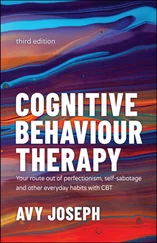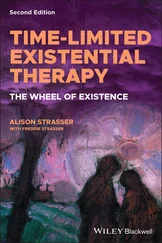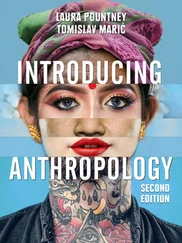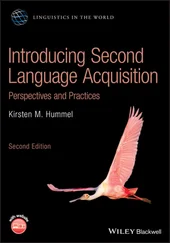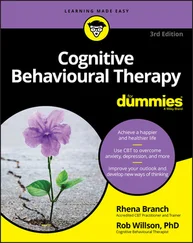One of the critical tests of the achievement of any remarkable, creative, and charismatic character, which Tony certainly was, is the way in which their achievement and any model they may have created survives and prospers subsequent to their death. In this I am very clear, as are many others, that the current CAT model described in some detail in this volume is doing just that and that, given its principles and underpinnings, it should continue to play a major creative and contributory role in the future to human mental health and well‐being in various ways. That this might occur was one of his principal passions and aims. Having said that, like many of us he was recurrently saddened and frustrated by the evident socio‐political direction of the world at large. I am sure his enthusiasm to update and publish this volume despite his illness also related to a hope that the model might in some small way contribute to ameliorating and improving this situation. Certainly, the evolved CAT model seemed to us also to address a global epidemic, including and especially in more “developed” countries, of so‐called mental disorders in a much more radical, thorough‐going, and humane manner than currently dominant, more individualistic and mechanistic paradigms. As such we were sure that if human sense, compassion, and evidence prevail (about which sadly neither author was very confident) CAT will ultimately be able to offer a great deal, including in ways far beyond its use as a model of individual therapy, important as that is, into more clearly systemic and socio‐political domains. These issues and these potential applications are discussed further in the book.
However, Tony’s death left the final task of articulating and presenting many of these revisions to myself. These have however all been based on our extended discussions—some quite animated!—and also on our deep, essential agreement about the core of the model and what sorts of revisions needed to be undertaken. These have been also based on initial drafts that we both did and discussed, and on consideration of various review articles and books containing both theoretical and clinical developments that had appeared in recent years and presented and/or approved of by himself (e.g. Ryle et al., 2014, Kerr et al., 2015, Kerr, Hepple and Blunden, 2016; Pickvance 2017; Ryle and Kellett, 2018).
Tony was very clear that he wished the revision to proceed on this basis with myself as more active co‐author despite his illness. I believe there is nothing in this volume that was not agreed and decided at least in principle with Tony, although of course its presentation, expansion, and articulation in many cases has fallen to myself notwithstanding our initial drafts. I am, therefore, wholly responsible for any serious deficiencies of content or style related to this. However, I hope that it may still represent an important “staging post” in the development and evolution of CAT in that it represents the last position and views of its creator. This should not of course be regarded as any kind of “final word”; and indeed Tony certainly did not wish this to be the aim. We were both very clear this volume could only represent a re‐statement, expansion, and clarification of Tony’s own views on the development of the model hitherto, aided and abetted in this case by myself. We were clear about the subsequent need to continue developing the model in a further integrative manner, in ways which may prove to be quite counter‐intuitive and unexpected. Nonetheless this re‐statement may be perhaps an important reference point in that process of the development and of the application of the model by others.
We agreed that there was a need for a revised and updated edition for various reasons. These include a proliferation of new understandings over the past couple of decades relating to mental health, treatment for mental health problems or disorders, understandings of psychotherapy, and in relation to the CAT model itself. These developments have occurred in fields as diverse as infant psychology, developmental neuroscience, social psychiatry, through to the social and political sciences, and also developments, for example, in understanding of factors, including common factors, relating to process and outcome in psychotherapy. Since the first edition appeared there has also been a proliferation of innovative and humane uses of CAT, some rather unexpected, for example in work with schools, refugees, police and forensic services, in consideration of broader socio‐political challenges (see e.g. Lloyd and Pollard 2018), as well as for a whole range of mental health problems (see especially Chapter 9).
Feedback from and reflection on the first edition made it clear also that some clarification of fundamental theoretical concepts was needed, as well as perhaps a clearer and in places a more helpfully didactic presentation of them. Some confusion and ambiguity have occurred, in retrospect probably largely due to the history and “archaeology” of CAT and its development over many years. This has resulted in certain key concepts like procedures, reciprocal roles, reciprocal role procedures, and even repertory grids, being more predominantly focused on and stressed at different stages in the evolution of the model, and accordingly subtly changing, with these concepts sometimes being used in ambiguous or overlapping ways for these reasons. This evolution and history has undoubtedly caused some perplexity, for example to trainees over the years, and has also undoubtedly affected the way in which practitioners and supervisors, who would have trained at different times, have understood and used these concepts and how they work with the model. Although we are clear that the underpinning, relational, core concepts in CAT have remained consistent for many years, we have therefore revisited these and, we hope, helpfully clarified, amplified, and restated these in the early chapters of this revision.
As regards the enduring fundamental core of the established CAT model, Tony clearly felt increasingly that this was still essentially embodied in the “Procedural–Sequence Object–Relations Model” (PSORM) notwithstanding various later refinements and enrichments, for example by Vygotskian activity theory and Bakhtinian concepts of a dialogical self, and by diverse, for example more “here and now,” clinical and other applications. The PSORM of course implies a clear presentation and understanding of early developmental internalization of (formative) reciprocal relationships ( reciprocal roles , akin to although differing significantly from internal objects), and an understanding of and stress on how, on this basis, we subsequently develop and enact patterns of coping and responding ( reciprocal role procedures ). We were both rather concerned that the important interest in more recent years in systemic or “contextual” role enactments in the here and now (including also therefore more “situational” RRs) can potentially lead to loss of focus on deeper, historic internalized RRs and their consequences for the patient or client, given that these are of fundamental importance in clinical presentations and in therapy. Indeed, at times in therapy they may be the sole focus of activity. These issues are again addressed in the early and then later chapters.
I have felt rather freer to expand as I saw fit concepts or sections for which I was originally largely responsible, for example consideration of psychotic disorders, “contextual” and systemic approaches, and the clarification and presentation of “Self” as an “organizing construct” within CAT. These have appeared to be of some importance and were developments that Tony also contributed to and fully supported, both in discussion and having read and approved various publications up to 2016—where some of these various changes and clarifications were first mooted. We also both felt the section on sex and gender‐related issues ( Chapter 9) needed to be expanded considerably given important developments over recent years in this challenging and complex area, and we have attempted to do this with the assistance of others who are acknowledged in the text.
Читать дальше




